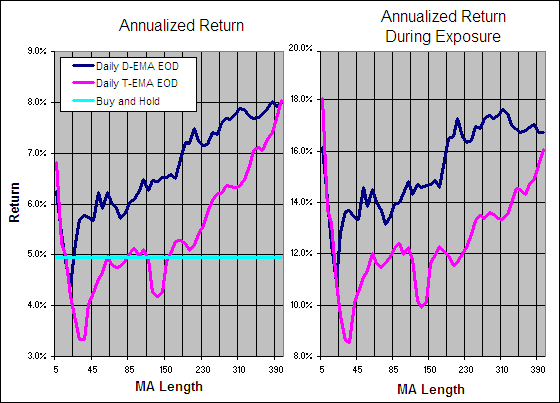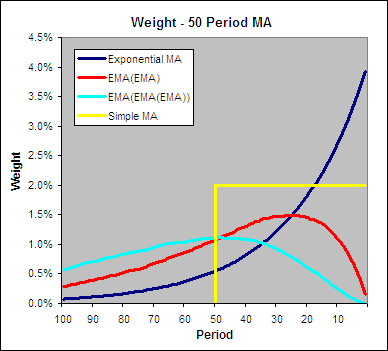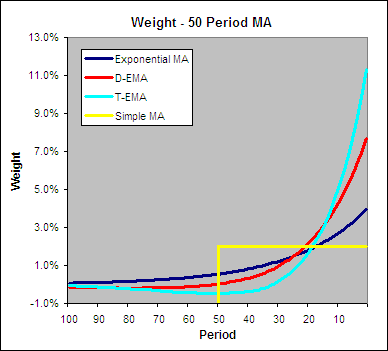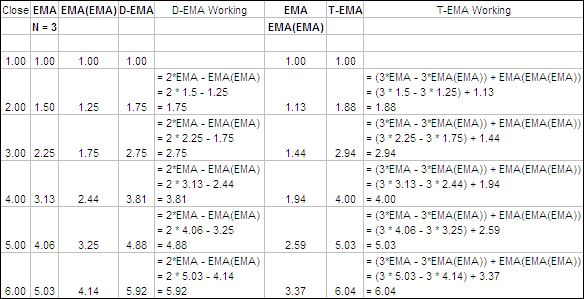In this round of testing we are looking at the Double Exponential (D-EMA) and Triple Exponential Moving Averages (T-EMA). We have already tested the D-EMA and found that it wasn’t as effective as the EMA but wanted to test it over longer periods and compare it to the T-EMA.
In conducting these tests we measured the performance of each indicator going Long and Short, using Daily and Weekly data, taking End Of Day (EOD) and End Of Week (EOW) signals with smoothing periods varying from from 5 – 400 days or 80 weeks.~ These tests were carried out over a total of 300 years of data across 16 different global indexes (details here).
Note – Due to the huge lead in period required for the T-EMA, 240 weeks of data was ‘left in’ on each market. As a result the average buy and hold annualized return for the test markets was 4.94%. In our previous tests we only ‘left in’ 104 weeks and the subsequent buy and hold annualized return for the test markets was 6.32%. For this reason the results for these tests are not directly comparable to our other tests results. This is also why the returns for the D-EMA displayed below are lower than those previously published.
.

.
Above are the return statistics when going long using daily, end of day signals. As you can see the Triple EMA under performs the Double EMA by a significant margin. Due to the fact that we have already established that the D-EMA is not worthy of use in a trading system the same can be said for the T-EMA and therefore there is no point in displaying any more statistics for these indicators. See also – Simple Vs Exponential Moving Averages
.



